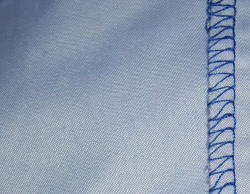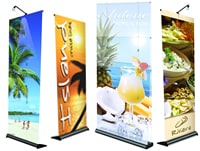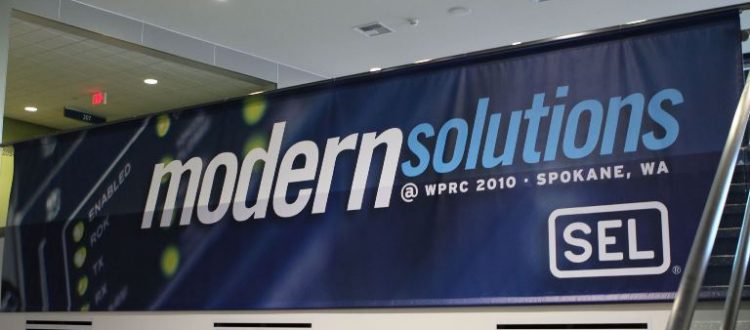The fabric suitable for dye sublimation printing and the pros of this print technology.
Question: Do fabrics need to be 100% polyester for dye sub printing?
While you do need at least 60% polyester fabric to successfully dye sub print, it is better to use 100% polyester because you will attain a superior print if 100% of the fabric accepts the dye when it enters gas form and is inducted into the open polymer pores.
 What you may not know is how this process works and why polyester fabric is the best product for dye sublimation, whereas cotton, wool, and even nylon will not work for this type of printing.
What you may not know is how this process works and why polyester fabric is the best product for dye sublimation, whereas cotton, wool, and even nylon will not work for this type of printing.
Starting with the dye, it is necessary to know that the dye is not the same type of ink as inkjet inks which use the CMYK (cyan-magenta-yellow-black) ink set, but instead, use a CMYO dye set (cyan-magenta-yellow-overprint clear) where the clear, when it is printed on the dye sublimation transfer paper, turns to black and transfers that way.
Once the paper is printed, it is joined, print side to whichever type of material you are using, then put through a set of heated rollers. The heat must be in excess of 370º F (190ºC) to cause the dye to be converted into a gaseous form, and also to cause the polymer’s cells to open as they expand to accept the now gaseous dye into the cells.
Once this process has taken place, the fabric cools, the cells close, and the color is permanently locked into the fabric in continuous tones of beautiful color, similar to a photograph’s tones.
Without the cellular construction of the polyester fabric and it’s polymeric qualities, it would not be possible to print using dye sublimation. So, the more polymers, the better. So the answer is, of course, yes and no. We recommend using 100% polyester, but it’s not an absolute requirement.
Question: What fabrics can you print using sublimation printing?
Any fabric having polymeric cellular structure. If that sounds like Greek to you, read the answer above as to why polymers are important, no, necessary for dye sublimation to work properly.
Having said that, there are a spate of fabrics that go by different names that are polymeric fabrics like polyester. They include polyacrylonitrile (Orlon and Acrilon brand names), acrylic (same brand names as previous), nylon (not printable with dye sublimation, though), polyethylene terephthalate (polyester), spandex, and a couple others that I can’t remember off the top of my head.
However, due to cost factors, availability, and ease of use, polyester is the best and least costly fabric available for graphic printing. If you have a dye sublimation printer and heat press, by all means, experiment with it. You might discover something new!
Question: What are the benefits of dye sublimation printing on fabric?
What aren’t the benefits!?
1. Long lasting printed colors
Dye sublimation printing will give you the longest lasting color in your fabric of any type of printing available on fabric. The best national flags are made of polyester because they are color fast and wind resistant.
2. Best fabric printing method.
 The best printing method on clothing is dye sublimation printing because there is no ink buildup that will prevent wicking of moisture away from the body. On fabric graphic displays, or art reproductions that are used indoors, the colors are guaranteed to last for 30 years or longer because they are encased in the sealed polymer cells.
The best printing method on clothing is dye sublimation printing because there is no ink buildup that will prevent wicking of moisture away from the body. On fabric graphic displays, or art reproductions that are used indoors, the colors are guaranteed to last for 30 years or longer because they are encased in the sealed polymer cells.
3. The dyes won’t easily fade.
Another benefit of dye sub printed polyester fabric banners or displays or clothing is that you can wash them for years and not lose any color. I have a shirt that is a dye sublimation floral “Hawaiian-style” print that gets hung out to dry in the sun, and after several years it has not faded at all, unlike my cotton print shirts.
4. Colored-rich prints.
Finally, although there are other benefits I could point to as well, the last benefit is the richness of the color print on the polyester fabric. Because the dye is converted to gas during the heat transfer process, the tones blend into each other, creating a photographic quality to the prints, unparalleled by any other printing process.
Learn more about dye sublimation printing of fabric displays made from Polyester and Silk. Pricing is at wholesale. See more features as well.
Popular Posts:




